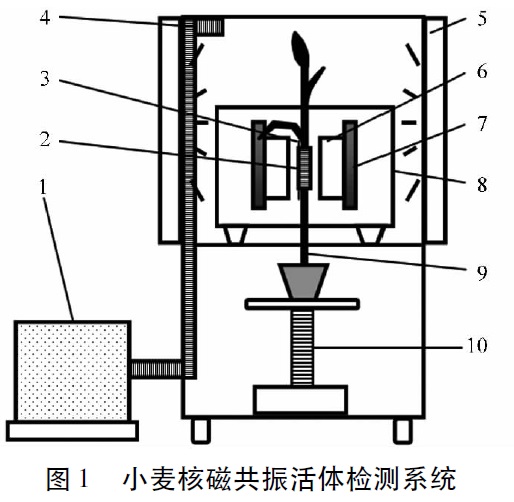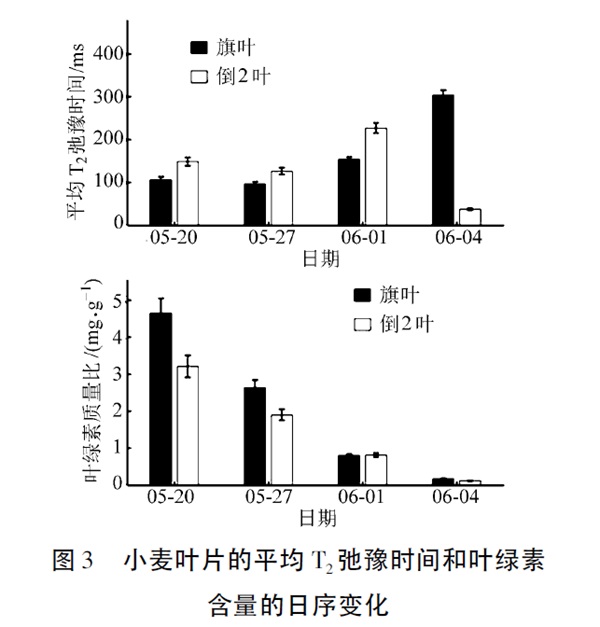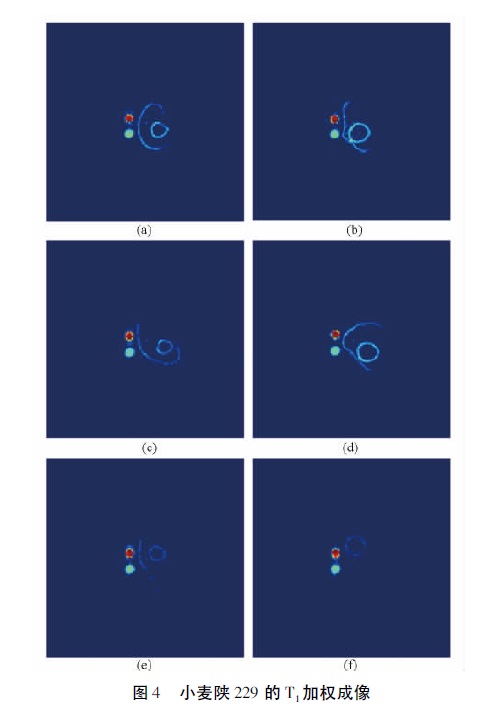Background introduction
The greening function of wheat leaves during grain filling stage is of great significance to grain yield. It is a phenotypic characteristic that wheat breeding experts attach great importance to. At present, the senescence status of wheat leaves is mainly evaluated by leaf color, relative area of ​​green leaves and chlorophyll fluorescence. The method is influenced by the subjective feelings of the observer, while the latter is affected by factors such as solar radiation, and the leaf chamber fixture is easy to cause damage to the blade. Low field nuclear magnetic resonance with 1H as a probe can be used to detect the physiological state of plants. For example, the nuclear magnetic resonance T2 relaxation property of plant leaves (NMR T2 Relaxivity) is closely related to water content, water distribution, transpiration activity and water potential. Compared with other technologies, nuclear magnetic resonance technology has the advantages of rapid detection, diverse detection methods, non-destructive and non-contact.
Using nuclear magnetic resonance T2 relaxation spectroscopy and magnetic resonance imaging techniques, a nuclear magnetic resonance living system for wheat plants was established to study the relationship between water content, chlorophyll content and nuclear magnetic resonance T2 relaxation spectrum of wheat leaves, and to evaluate nuclear magnetic resonance on this basis. T2 relaxation spectra and magnetic resonance imaging techniques reflect the effectiveness of leaf senescence.

The variation of T2 relaxation spectrum amplitude and water content of wheat leaves with the order of the day is shown in Fig. 2. In late May, Shaan 229 was filled with milk ripening period. During this period, the 2 leaves entered the degradation stage, the leaf color began to turn yellow, and the flag leaves also showed signs of aging, and the leaf color began to fade, but the T2 relaxation spectrum amplitude and water content There have been no significant changes. In the first half of June, the grain filling of Shan 229 approached and the leaves entered the decline stage. The amplitude and water content of T2 relaxation spectrum decreased significantly.

The seasonal variation of the average T2 relaxation time and chlorophyll content of wheat leaves is shown in Figure 3. The average T2 relaxation time of the leaves increased gradually before the senescence (before June 1), the chlorophyll content decreased gradually, the chlorophyll content of the flag leaves was greater than that of the inverted 2 leaves, and the average T2 relaxation time of the flag leaves was relatively small; The Shaan 229 plants selected on the 4th of the month had complete decline of the inverted 2 leaves, and the average T2 relaxation time and chlorophyll content reached the minimum, while the flag leaves still maintained a certain water content, although the chlorophyll content also reached the minimum. However, the average T2 relaxation time has not yet reached the decay stage.


Pain Relief Patch for Breast
[Name] Medical Cold Patch
[Package Dimension] 10 round pieces
The pain relief patch is composed of three layers, namely, backing lining, middle gel and protective film. It is free from pharmacological, immunological or metabolic ingredients.
[Scope of Application] For cold physiotherapy, closed soft tissue only.
[Indications]
The patches give fast acting pain relief for breast hyperplasia, breast fibroids, mastitis, breast agglomera tion, swollen pain.
[How To Use a Patch]
Please follow the Schematic Diagram. One piece, one time.
The curing effect of each piece can last for 6-8 hours.
[Attention]
Do not apply the patch on the problematic skin, such as wounds, eczema, dermatitis,or in the eyes. People allergic to herbs and the pregnant are advised not to use the medication. If swelling or irritation occurs, please stop using and if any of these effects persist or worsen.notify your doctor or pharmacist promptly. Children using the patch must be supervised by adults.
[Storage Conditions]
Store below 30c in a dry place away from heat and direct sunlight.
Pain Relief Patch For Breast,Pain Relief Plaster For Breast,Relief For Breast Pain,Pad Relief Patch For Breast
Shandong XiJieYiTong International Trade Co.,Ltd. , https://www.xjpatches.com